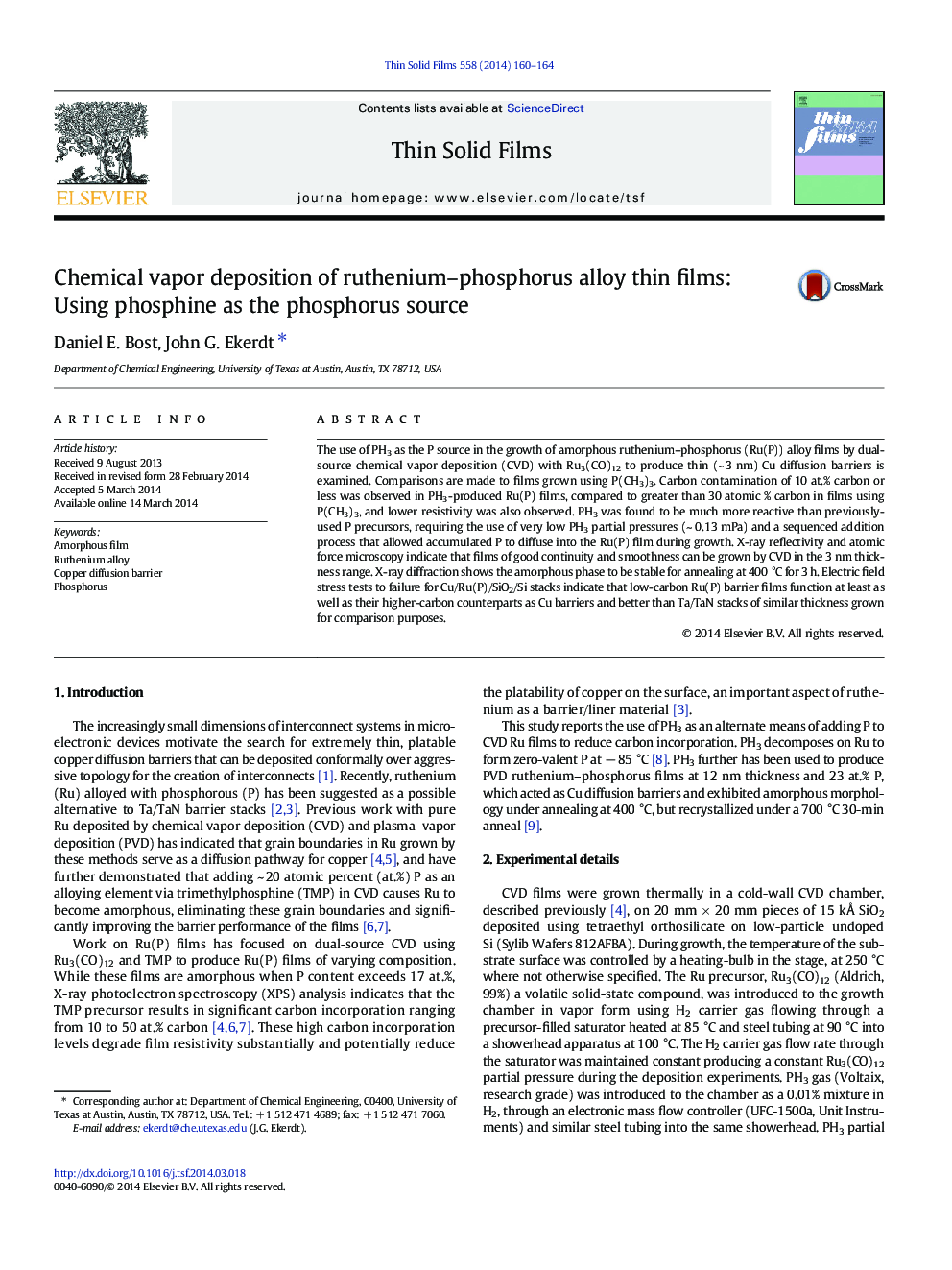| Article ID | Journal | Published Year | Pages | File Type |
|---|---|---|---|---|
| 1665443 | Thin Solid Films | 2014 | 5 Pages |
•Reports the CVD growth of 3 to 5 nm amorphous Ru(P) thin films PH3 as the P source•PH3-grown Ru(P) films have ~ 10% C content the same as films with zero % P.•Fast PH3 decomposition at 250 °C can lead to P accumulation on the growth surface.•Amorphous, continuous 3 nm Ru(P) films realized for P content > 20 atom %•Electrical field stress tests indicate 3 nm Ru(P) function as a Cu diffusion barrier.
The use of PH3 as the P source in the growth of amorphous ruthenium–phosphorus (Ru(P)) alloy films by dual-source chemical vapor deposition (CVD) with Ru3(CO)12 to produce thin (~ 3 nm) Cu diffusion barriers is examined. Comparisons are made to films grown using P(CH3)3. Carbon contamination of 10 at.% carbon or less was observed in PH3-produced Ru(P) films, compared to greater than 30 atomic % carbon in films using P(CH3)3, and lower resistivity was also observed. PH3 was found to be much more reactive than previously-used P precursors, requiring the use of very low PH3 partial pressures (~ 0.13 mPa) and a sequenced addition process that allowed accumulated P to diffuse into the Ru(P) film during growth. X-ray reflectivity and atomic force microscopy indicate that films of good continuity and smoothness can be grown by CVD in the 3 nm thickness range. X-ray diffraction shows the amorphous phase to be stable for annealing at 400 °C for 3 h. Electric field stress tests to failure for Cu/Ru(P)/SiO2/Si stacks indicate that low-carbon Ru(P) barrier films function at least as well as their higher-carbon counterparts as Cu barriers and better than Ta/TaN stacks of similar thickness grown for comparison purposes.
